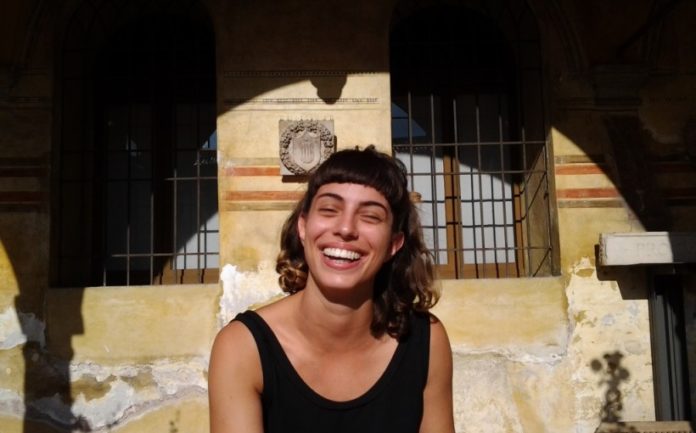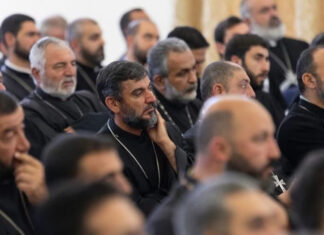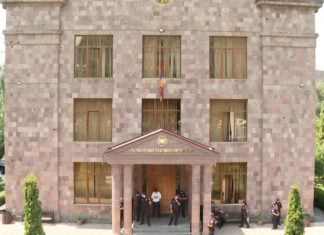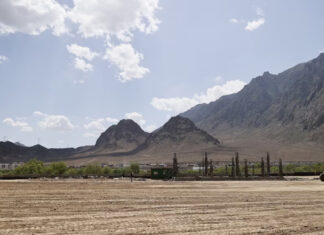By Artsvi Bakhchinyan
Special to the Mirror-Spectator
YEREVAN — More than a quarter century ago, a young American-Armenian woman from Los Angeles visited Venice for the first time. The very first day she arrived in this romantic city, while on a motor boat, a gondolier greeted her from his gondola inviting the beautiful tourist to ride. By the end of the day the handsome Venetian already offered his heart and soul to her. Thus, Marie Ohanesian and Roberto Nardin formed a family, having two daughters — Giоrgia and Rebecca.
I spoke with Giorgia Ohanesian Nardin — a young charming artist, an independent choreographer and performer. She trained at the Northern School of Contemporary Dance in Leeds (UK), and graduated in 2010. Her first project as a choreographer took place in collaboration with artists Francesca Foscarini and Marco D’Agostin. The trio met at the Accademia Mobile by Emio Greco|PC, held during the OperaEstate Festival Veneto in 2010, and together they created Spic & Span, a piece which won Special Mention in Premio Scenario 2011. Since 2012, Giorgia has been collaborating as a performer with Barokthegreat in the works Indigenous and Attacco del Clone. Her first solo, “Dolly,” was a finalist at the GD’A Prize 2012, received Special Mention from the DNA|Romaeuropa Festival, was selected by the national Rete Anticorpi XL, presented at the Vetrina della Giovane Danza d’Autore and invited to the Italian Showcase as part of the Edinburgh Fringe Festival 2013.
Nardin has been selected to take part in numerous European projects, some of which are ChoreoRoam Europe 2012, developed by CSC/Centro per la Scena Contemporanea Bassano del Grappa (Vicenza), The Place (London), Dansateliers (Rotterdam), Paso a 2/Certamen Coreografico (Madrid), Dance Week Festival (Zagreb), B Project 2013, developed by Jheronimus Bosch 500 Foundation (‘s-Hertogenbosch), CSC/Centro per la Scena Contemporanea, Dance Umbrella (London), D.ID Dance Identity (Pinkafeld), La Briqueterie-Centre de développement chorégraphique du Val de Marne (Paris), Dansateliers (Rotterdam) Performing Gender, developed by Comitato Provinciale Arcigay Il Cassero/Gender Bender Festival (Bologna), Nederlandsedansdagen/Dutch Dance Festival (Maastricht), Domino Association (Zagreb) and Paso a 2 Certamen Coreográfico (Madrid) and Communicating Dance, developed by CSC/Centro per la Scena Contemporanea, Le Pacifique Centre de Développement Choréographique (Grenoble), Dance Ireland (Dublin), Dansateliers, Hrvatski Institut Za Pokret I Ples (Zagreb) and K3 Tanzplan (Hamburg). All Dressed up with Nowhere to Go, her first piece for two performers, is the winner of Premio Prospettiva Danza 2013, selected to be presented as part of NID Platform 2014 and has been touring both nationally and internationally.








